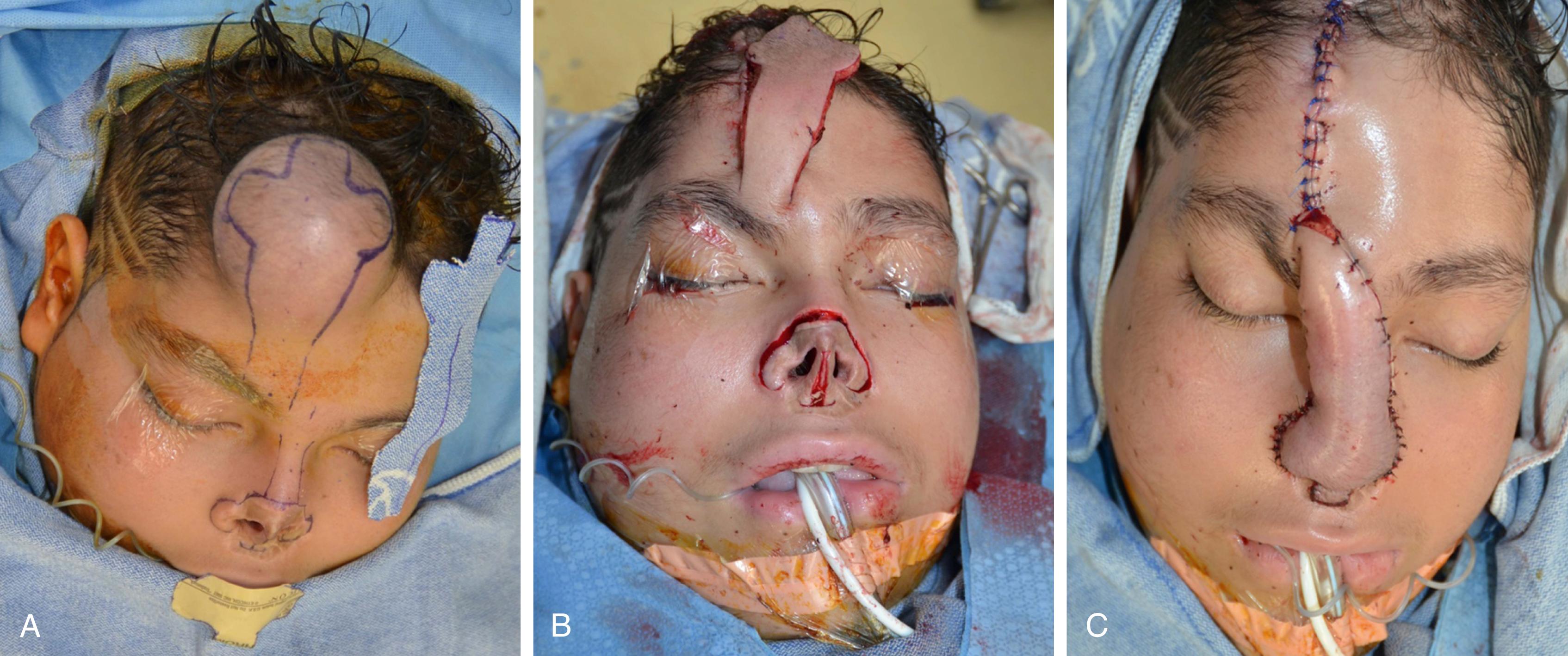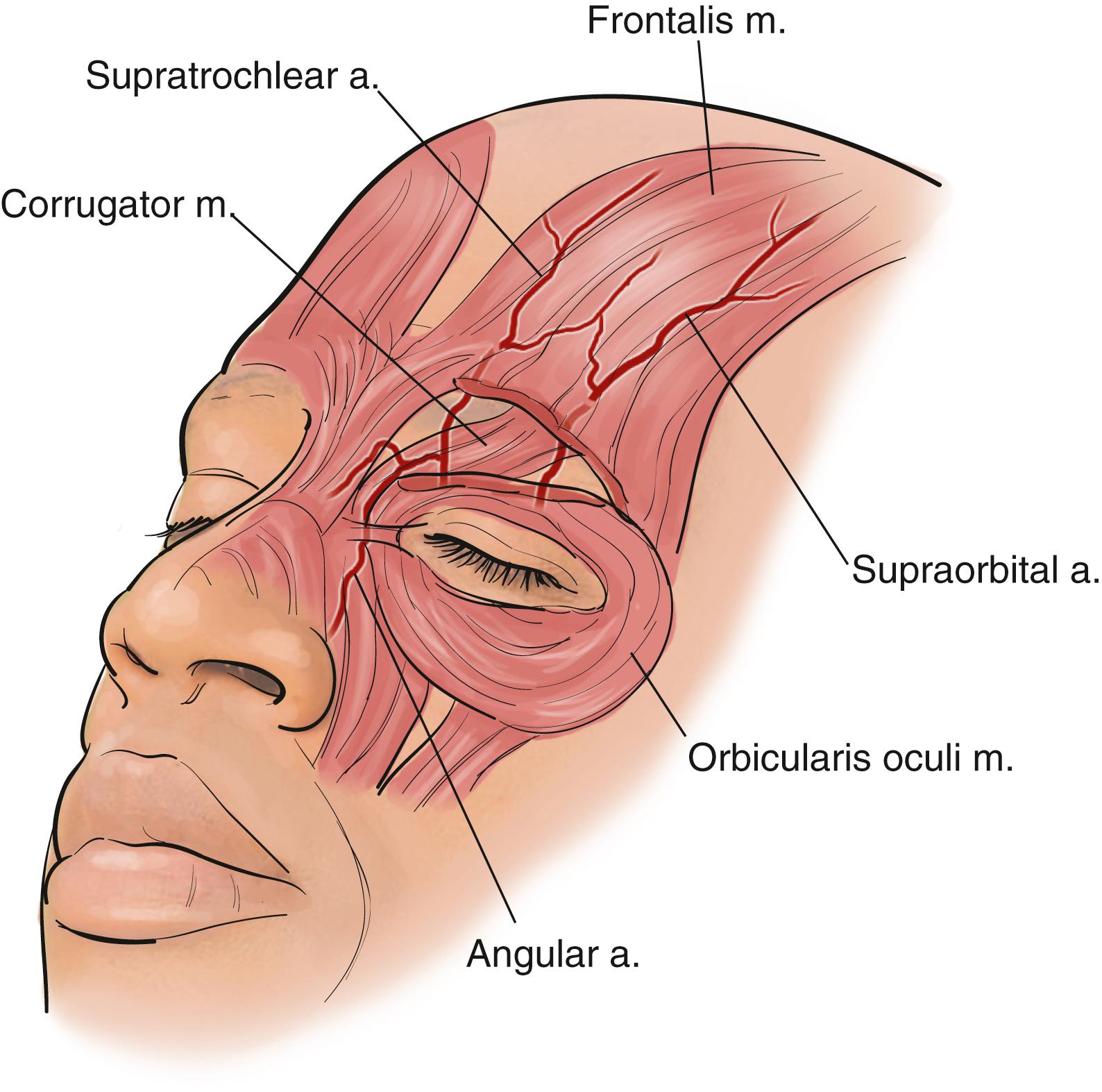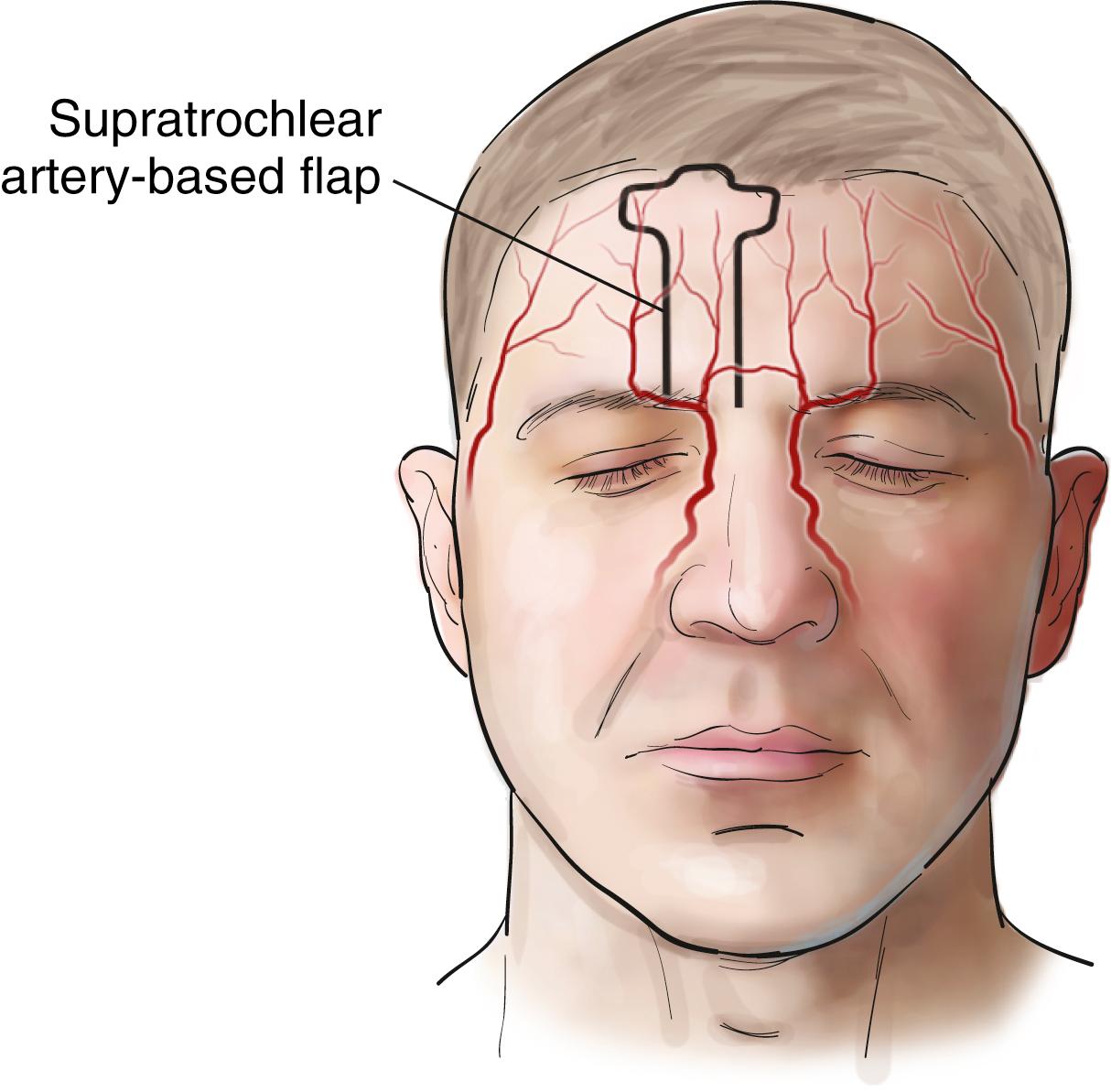Physical Address
304 North Cardinal St.
Dorchester Center, MA 02124
The origin of forehead flaps dates back thousands of years. Practitioners in ancient India were the first known to harvest skin from the forehead to repair facial defects, mainly of the nose. Due to nasal amputation as a common form of judicial and political punishment at the time, there was ample opportunity for the practice of reconstruction using forehead skin. Interestingly, the practitioners of the forehead flap surgical procedure belonged to the potter and tilemaker castes rather than that of the physicians. This method was kept as a closely guarded secret, passed down through oral tradition. The first written account of forehead flaps was a 1794 letter to the editor of the British periodical Gentleman’s Magazine , likely written by Colly Lyon Lucas, the British chief surgeon of Madras, India. The first forehead flap performed in the West was in 1814 by Dr. Joseph Constantine Carpue of England. In the United States, John Mason Warren performed the first operation in 1834.
Further exploration and refinement of the forehead flap as a method of reconstruction followed throughout the 20th century. Forehead tissue is currently the gold standard for nasal reconstruction and is also used for many other facial defects. This chapter examines the use of the forehead flap in repairing defects of the head and neck.
The size, shape, and location of the defect dictate the surgical planning of the forehead flap.
As it courses superiorly, the supratrochlear artery passes superficial to the corrugator supercilii muscle and deep to the orbicularis oculi and frontalis muscles, piercing the frontalis to become subcutaneous 1 to 2.5 cm superior to the orbital rim.
The base of an inferiorly based vertical forehead flap should be 1.0 to 1.5 cm wide, wide enough to allow for inclusion of the pedicle artery but narrow enough to permit easy rotation for preservation of length.
The division and proximal inset of a forehead flap must be delayed until neovascularization of the flap has taken place.
History of present illness
Forehead flaps are most commonly used to reconstruct defects of the nose.
The mechanism of tissue loss may be excision of a cancer, trauma, infection, or congenital defects.
Past medical and surgical history
Previous soft tissue trauma to the forehead (i.e., old lacerations, excision of cancer) can potentially disrupt the blood supply to a forehead flap.
Age and comorbid conditions should be ascertained, as they dictate the patient’s American Society of Anesthesiologists (ASA) classification and risk of general anesthesia.
Patients must be psychiatrically stable and emotionally prepared if they are to undergo a multiple-stage flap reconstruction.
Medications
If a patient is taking anticoagulation medication, the necessity of the anticoagulation and the potential health risks of temporary cessation or bridging should be weighed.
Social history
Smoking is associated with a higher risk of complications (i.e., ischemia of the flap and delayed donor site healing).
Characteristics of the defect to be reconstructed ( Fig. 165.1 )
Size: Though the majority of defects are successfully reconstructed with a paramedian forehead flap, a median forehead flap may provide a larger surface area for a near-total nasal reconstruction.
Shape: Dictates the design of the forehead flap. For example, the three-dimensional contour of a large nasal defect requires precise planning (i.e., a template of the nose is designed on the forehead) to reconstruct the different subunits of the nose ( Fig. 165.2 ).


Location: To reach inferior defects, such as a columellar defect, the forehead flap may occasionally need to be extended into the frontal hairline. To avoid the hairline, the flap can be lengthened by extending the incisions inferiorly into the brow or by designing it slightly obliquely.
Tissue missing: The skin of the forehead flap is routinely used for reconstructing the cutaneous component of a nasal defect. Other options must be included to reconstruct composite nasal defects (i.e., defects involving cartilage and nasal lining).

Forehead examination
Examine the forehead skin for any abnormality (i.e., scar, actinic changes) that could affect blood supply, the quality of the skin, or the ability to close the defect created by raising the forehead flap.
Note the position of the frontal hairline.
The distance from the base of the forehead flap to the defect must be meticulously measured to ensure adequate length once the flap is rotated.
Consider the possibility of using tissue expanders (see Fig. 165.2 ) for excessively wide defects.
Imaging is not necessary in the surgical planning of a forehead flap.
Intraoperative Doppler may be used to mark the course of the supratrochlear artery.
Nasal cutaneous defects
Periorbital and cheek defects when other local options (i.e., cheek advancement flaps) are not available
Not medically stable to undergo local anesthesia with sedation
Psychiatrically or emotionally unstable (especially for multistage procedures)
Significant scarring, previous radiation therapy to the forehead, or other previous surgery (i.e., bicoronal incision for access the frontal skull), which may disrupt adequate blood flow and preclude its use as donor tissue
Active smoking is not an absolute contraindication to surgery but should be approached with caution. Delayed procedures (e.g., incising the perimeter of the flap without initially raising it) may be advised.
There are many options for the reconstruction of nasal defects. The surgeon and the patient should carefully decide which best fits the needs of the defect and the patient. Healing by secondary intention, primary closure, skin grafting, and other local flaps are alternative options (see Chapter 163 ).
Timing of reconstruction
After creation of the defect (i.e., after Mohs surgery): The reconstruction may be more definitively planned preoperatively since the extent and location of the defect is known.
Concurrent with the creation of the defect (i.e., intraoperatively after tumor margins have been cleared with frozen sections): Preoperative counseling will likely include more reconstructive options since the extent of the defect is not precisely known before tumor excision. Delayed reconstruction pending final pathology margins is often desirable.
Optimization
Medical conditions: Obtain medical clearance for general anesthesia if necessary.
Discontinuation of anticoagulation if possible
Cessation of smoking
Photographs to document the defect, reconstructive options, and outcomes
Become a Clinical Tree membership for Full access and enjoy Unlimited articles
If you are a member. Log in here